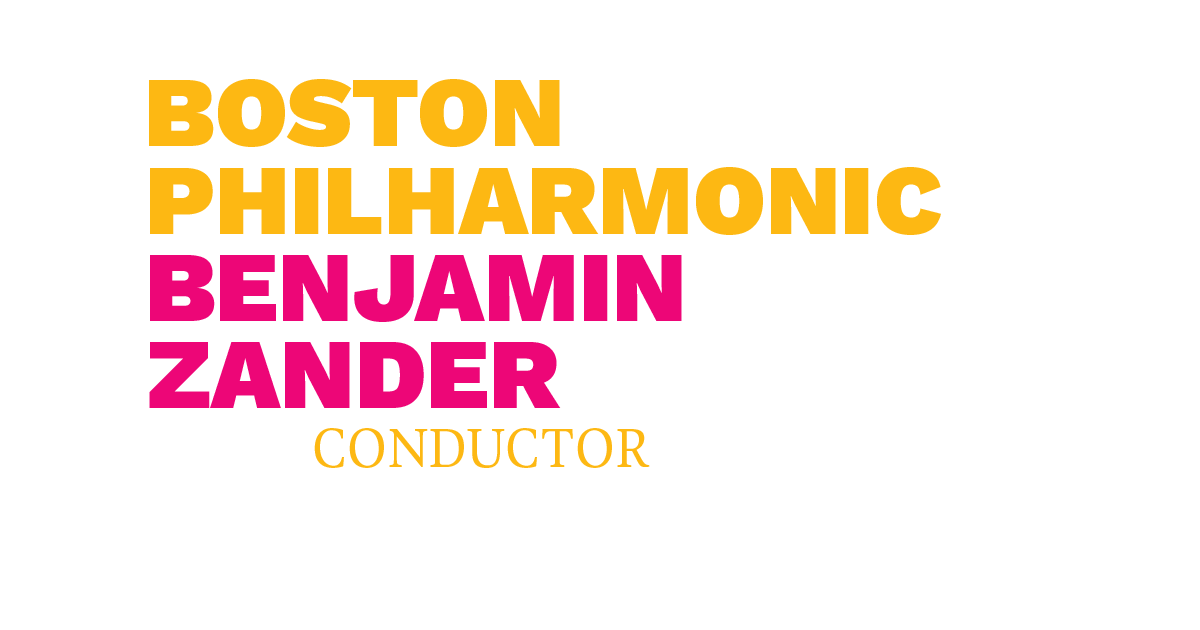The latent mysteries and tantalizing possibilities in classical music’s unfinished works have fascinated and confounded musicians and scholars since Mozart’s incomplete Requiem became legend.
February 23–26, the Boston Philharmonic Orchestra will take on the monumental, yet unfinished, Ninth Symphony by Anton Bruckner, a composer whose works have been skillfully interpreted and championed by conductor Benjamin Zander, earning him a Grammy nomination.
Bruckner began his beloved and profound final symphony in 1887 and worked on it right up to his death in 1896. Despite interrupting his composition process in 1892 to write his final motet, Vexilla Regis, Bruckner managed to complete 3 of the 4 planned symphonic movements. Knowing he was unlikely to complete his finale, Bruckner himself suggested that Symphony No. 9 might be concluded with his 1883 Te Deum. This solution to the missing finale has not met with universal acceptance and is today rarely used in performance, due to the clashes of key and tonality between the completed symphony movements and the Te Deum.
Since he worked section by section, finishing each in full score before moving on to the next chunk of material, Bruckner unfortunately did not leave enough continuous sketches of the finale among his copious folios to reveal its full form. Or, if he did, many pages were taken by autograph and souvenir hunters upon his death.
Nine scholars and conductors have constructed completions based on Bruckner’s extant sketches. American physicist and Vice President of the Bruckner Society of America William Carragan was one of the first scholars to offer a completion of Symphony No. 9. His finale, which had its world premiere in 1984, primarily filled in the gaps between Bruckner’s extensive sketches and incorporated melodies from the Te Deum. Italian composer Nicola Samale, working with Giuseppe Mazzuca, John A. Phillips, and Benjamin-Gunnar Cohrs, has done the most work toward a definitive completion, producing 7 versions between 1984 and 2011 that each incorporate new research and discovered folios. Despite his extensive research, Samale’s completions, like those before him and since, have failed to win widespread acceptance and performances.
Benjamin Zander and the BPO, in their fidelity to Bruckner’s inspired vision for this symphony, will perform only the three movements of the Ninth completed by the composer himself. As a conductor and interpreter of Bruckner, Zander does not feel comfortable presenting music that does not come directly from the composer.
His performance choice will underline the poignancy that accompanies any great work left unfinished. While the lack of a final movement “robs [the symphony] of its full glory, we can still appreciate its beauty,” remarks Zander.
Like Bruckner, Gustav Mahler failed to complete his final symphony (in his case, his tenth), before his death in 1911, instigating decades of effort on the part of scholars and fellow conductors to render a complete version for performance. Unlike Bruckner, Mahler finished only the first movement, but left behind a continuous short score sketch of the remaining movements, and a wife who pursued and advocated for the completion of his symphony.
Alma began her efforts in 1924 when she gave Mahler’s manuscript to composer Ernst Krenek and conductors Franz Schalk and Alexander von Zemlinsky. This trio of musicians only produced performing scores for the first and third movements. Alma additionally sent materials to Dutch conductor Joseph Willem Mengelberg, who also made a 2-movement performing version for his concerts with the Amsterdam Concertgebouw. Alma was apparently satisfied, and let the matter rest.
Nonetheless, in the 1940s, interest in a performing version that would include all five of Mahler’s planned movements grew among enthusiasts of his music. Schoenberg, Britten, and Shostakovich were all approached, but each declined. Four scholars then stepped in and labored over the project for the next two decades. Among these efforts, Derycke Cooke’s completion of Mahler’s Symphony No. 10 has become the most widely accepted and performed. Cooke began his completion in 1959 for a BBC celebration of Mahler’s centenary. For the 1960 concert, Cooke produced a performing score for only the first, third, and final movements. Alma initially refused to endorse Cooke’s efforts, but after finally hearing a recording of the performance in 1963, she gave her blessing to the project. Cooke continued to work on his completion of the 10th symphony, producing his first version containing all five movements in 1964, and updating it between 1966 and 1972 as Alma made more original documents and manuscripts available to him. Cooke’s final version was published in 1976.
Despite the extensive embrace of Cooke’s work (his version is the most widely recorded), his completion is not universally accepted and many recordings and performances still comprise only the Adagio movement Mahler himself finished.
The Boston Philharmonic Orchestra and the Boston Philharmonic Youth Orchestra will both close their seasons with Mahler. Chorus Pro Musica will join the BPO for Mahler’s Symphony No. 2 on April 14.
The following week, the BPYO will rise to the challenge of Mahler’s Sixth Symphony on April 23.
Dr. Stefanie Lubkowski
DMA, Boston University
Sources:
Grove Music Online
Oxford Music Online
Cambridge Companion to Mahler
“Music: Completing Bruckner’s Ninth,” New York Times, January 9, 1984





